Tobias Watzel
Adversarial Joint Training with Self-Attention Mechanism for Robust End-to-End Speech Recognition
Apr 03, 2021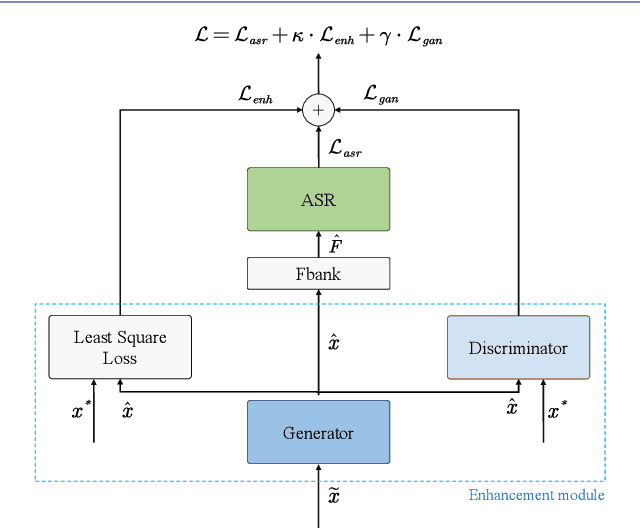
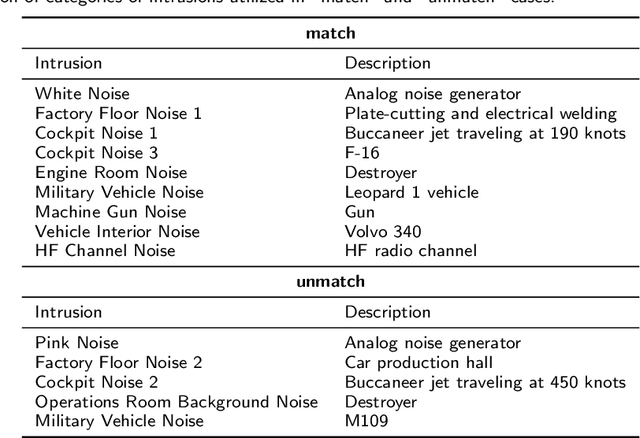
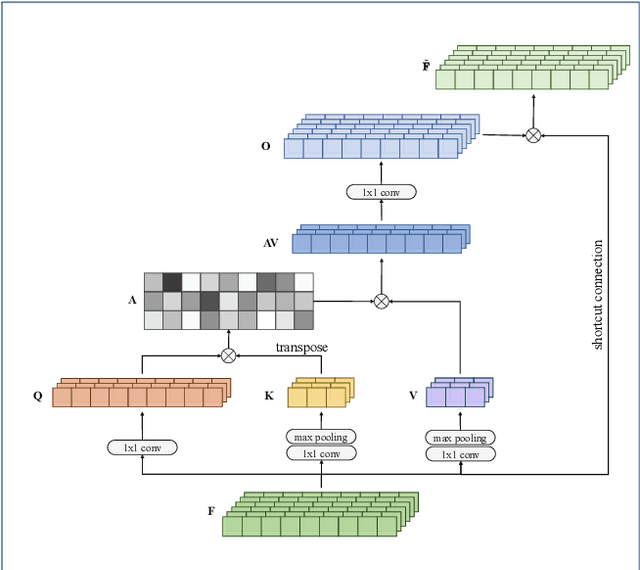
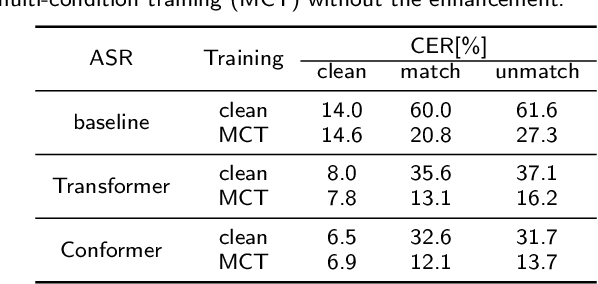
Abstract:Lately, the self-attention mechanism has marked a new milestone in the field of automatic speech recognition (ASR). Nevertheless, its performance is susceptible to environmental intrusions as the system predicts the next output symbol depending on the full input sequence and the previous predictions. Inspired by the extensive applications of the generative adversarial networks (GANs) in speech enhancement and ASR tasks, we propose an adversarial joint training framework with the self-attention mechanism to boost the noise robustness of the ASR system. Generally, it consists of a self-attention speech enhancement GAN and a self-attention end-to-end ASR model. There are two highlights which are worth noting in this proposed framework. One is that it benefits from the advancement of both self-attention mechanism and GANs; while the other is that the discriminator of GAN plays the role of the global discriminant network in the stage of the adversarial joint training, which guides the enhancement front-end to capture more compatible structures for the subsequent ASR module and thereby offsets the limitation of the separate training and handcrafted loss functions. With the adversarial joint optimization, the proposed framework is expected to learn more robust representations suitable for the ASR task. We execute systematic experiments on the corpus AISHELL-1, and the experimental results show that on the artificial noisy test set, the proposed framework achieves the relative improvements of 66% compared to the ASR model trained by clean data solely, 35.1% compared to the speech enhancement & ASR scheme without joint training, and 5.3% compared to multi-condition training.
Regularized Forward-Backward Decoder for Attention Models
Jun 15, 2020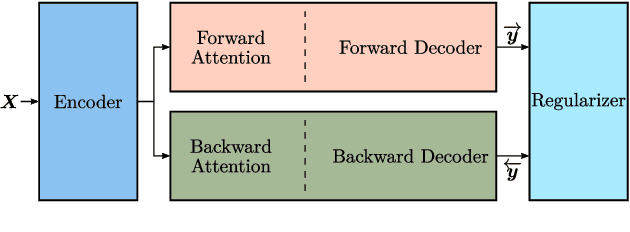

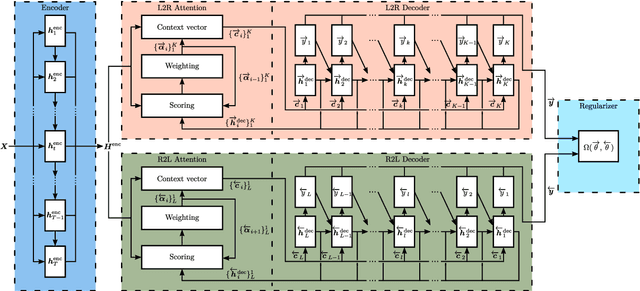
Abstract:Nowadays, attention models are one of the popular candidates for speech recognition. So far, many studies mainly focus on the encoder structure or the attention module to enhance the performance of these models. However, mostly ignore the decoder. In this paper, we propose a novel regularization technique incorporating a second decoder during the training phase. This decoder is optimized on time-reversed target labels beforehand and supports the standard decoder during training by adding knowledge from future context. Since it is only added during training, we are not changing the basic structure of the network or adding complexity during decoding. We evaluate our approach on the smaller TEDLIUMv2 and the larger LibriSpeech dataset, achieving consistent improvements on both of them.
 Add to Chrome
Add to Chrome Add to Firefox
Add to Firefox Add to Edge
Add to Edge